These famous cats are frequently portrayed in cartoons, movies, and television. Lions are imposing cats that exhibit unrivaled teamwork among felines. These magnificent predators are world renowned, and for good reason! Read on to learn about the African lion.
Description of the African Lion
African lions are large, muscular, barrel-chested cats. They have a rounded head, round ears, short fur, and a long tail with a tuft of hair at the end. Male lions grow a luxurious collar of long hair, called a “mane,” around their necks.
Interesting Facts About the African Lion
Lions are competent predators that work together to bring down prey. They have a number of distinctive behaviors and adaptations that help them survive in the harsh African savannah.
- My Mane Man! – African lions’ famous mane begins to grow when the male lion reaches one year of age. The color and size of the mane can vary greatly depending on the genetics, and environment, of the lion. Generally speaking, a darker, fuller mane indicates a healthier animal with prominent testosterone production.
- Maneless Males – In West Africa’s Pendjari National Park, nearly all male lions have little to no mane. Other maneless lions have been sighted in Tsavo East National Park in Kenya, Dinder National Park in Sudan, and in Senegal.
- Family Matters – A group of lions is known as a “pride.” Lion prides consist of a few male lions, approximately a dozen lionesses, and their cubs. All the female lions in a pride are related. The females will stay with the pride their entire lives, while the males search for a pride of their own when they reach sexual maturity.
- Teamwork Will Get You Dinner – Lions hunt in groups, and these groups are almost exclusively composed of lionesses, rather than male lions. Male lions can hunt, but do not typically participate in group hunts. Because the lionesses work together, they can capture prey that is much larger and faster than a single lioness could catch on her own.
Habitat of the African Lion
Lions prefer grassland and savannah habitats in close proximity to water sources, such as rivers. They also prefer hunting in open areas, rather than densely packed forest. Lions are absent from all rainforest habitats in their range.
Distribution of the African Lion
African lions have a number of subspecies separated by large, lion-less expanses. Historically, lions could be found across the vast majority of Africa, but their current range has been restricted to a smattering of locations in Central and Southern Africa.
Outside of Africa, lions used to be found from Greece all the way to India. Humans slowly decimated these populations over the centuries. Currently, only a small population of the Asiatic lion subspecies can be found in the Gir Forest National Park in Western India.
Diet of the African Lion
Lions are considered a hypercarnivore, which means that the vast majority (70%) of their diet comes from meat. They seem to prefer prey that weighs between 400 – 1,200 lbs. but will occasionally eat outside of that range. Some of their most common prey includes wildebeest, zebra, gemsbok, giraffe, buffalo, Thomson’s gazelle, and warthog. Each lion is thought to eat between 10 and 20 lbs. of food per day.
The Protection of Family
While female lions bring home dinner, male lions survey their territory and chase away rival males. Groups of male lions at the head of a pride have more success maintaining dominance than a single male does. Adult male lions are larger and heavier than females, making them the obvious choice in primary pride protection. Male lions will mark their territory by scent marking and roaring.
Roaming bachelor males will attempt to de-throne the current male(s) of the pride. These battles can be vicious, and for good reason. The male lion is not only defending his harem of females, but also his genetic progeny. When a new male takes over a pride, he kills all the young cubs in the pride. It is believed this occurs because the lionesses will not go into heat until her cubs mature or die.
African Lion and Human Interaction
Humans and lions interact in a number of different ways, most of them negative for either the lion or the human. Lion hunting has been a recorded human hobby since 1380 B.C. Inscriptions from ancient Egyptian Pharaohs detail the hunting of lions and the number of kills. In some African cultures the killing of a lion is even seen as a right of passage.
Lion hunting occurs now in the form of trophy hunts, as well as the illegal killing of “pest” lions. Livestock – being easy prey, especially when other prey is scarce – can become the target of lion hunts. When lions or other predators kill human livestock, the interaction usually results in the hunting and killing of all predators in the area.
Domestication
Lions have not been domesticated, but they have been successfully bred in zoos for a number of years.
Does the African Lion Make a Good Pet
No! Dangerous cats do not belong in the average person’s possession. Lions require extensive knowledge and understanding of animal behavior, lots of time and money, and large fenced areas for habitats.
African Lion Care
Lions are social animals and must be kept in groups. A pride of lions requires a large amount of space, enclosed by a fence tall enough to prevent climbing or jumping. They must be provided with fresh meat and water, as well as enrichment in the form of training, toys, and other enrichment devices. Enrichment must be given, as the lions are not performing their natural hunting behaviors when in human care.
Behavior of the African Lion
Lions spend lots of their time resting. They sleep, drowse, take catnaps, and lounge in the sun for a total of twenty hours out of the day! Lions are active during the day, but they tend to hunt more frequently at night. As the sun begins to set, the lions socialize, groom one another, and take care of their bathroom business. They will then spend most of the night alternating between lounging and hunting. Most hunts occur in the hours before sunrise.
Reproduction of the African Lion
Female lions will mate with whoever the most dominant male in her group is. She will also mate with any other males in the pride, but the most dominant will reproduce at a higher rate. Like most felines, male lions have a barbed penis that scrapes the female after mating. This frequently results in aggressive behavior from the female. It is believed that the barbed penis can stimulate ovulation when the female is in heat.
After 110 days, the female lion gives birth to 1 – 4 cubs. She will leave the immediate vicinity of the pride, and hide the cubs in tall grasses, caves, or bushes to keep them safe. Most females will not rejoin the pride until the cubs are between 6 and 8 weeks of age. The cubs are weaned at 6 – 7 months old, and the male cubs leave the pride between 2 and 3 years of age.
Beliefs, Superstitions, and Phobias About the African Lion
Lions are extremely common in folklore, tales, and cultural symbolism. Lions can be commonly seen in biblical references, ancient totems and paintings, god/goddess portrayals, and other art forms. In present times, lions continue to maintain their popularity in books, movies, and television shows.

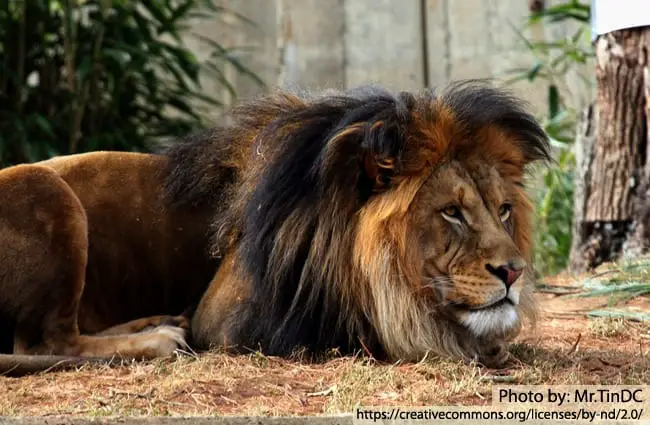

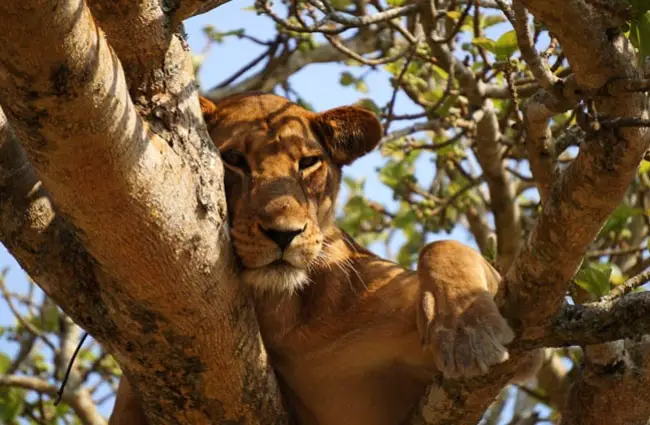
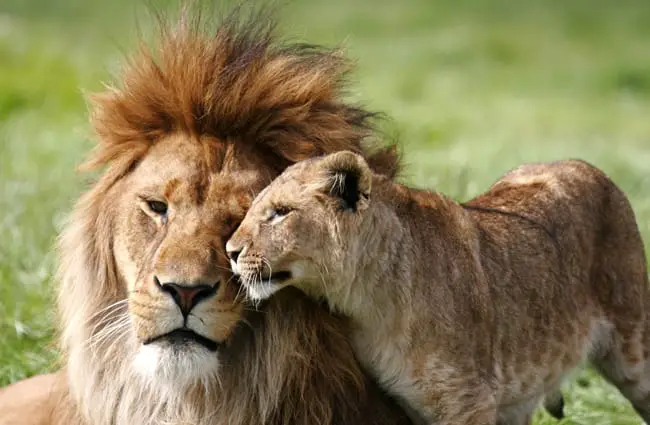
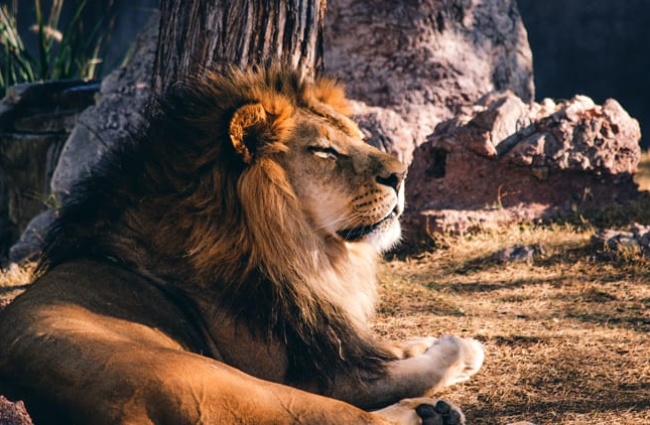
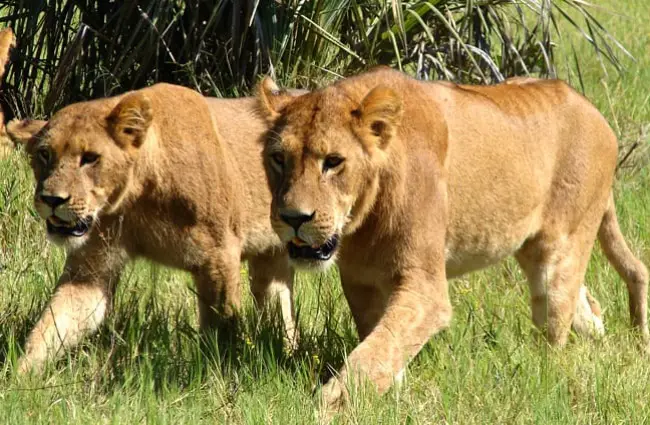
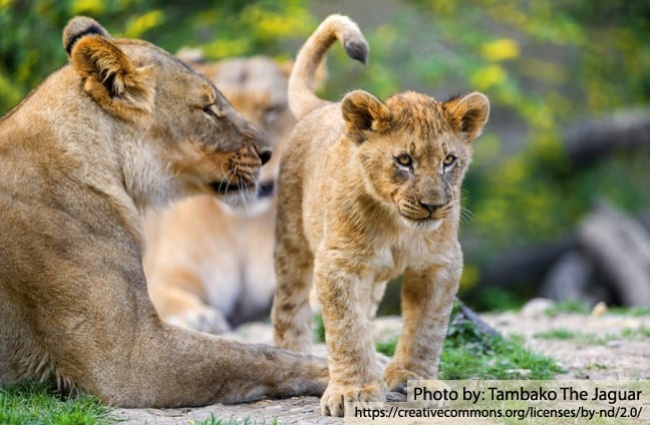

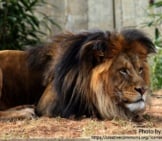
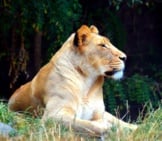
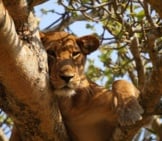
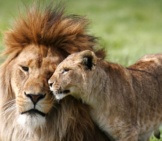
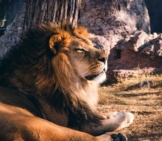

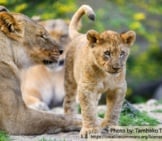
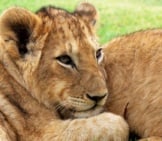
![Red Angus Closeup of a beautiful Red Angus cowPhoto by: U.S. Department of Agriculture [pubic domain]https://creativecommons.org/licenses/by/2.0/](https://animals.net/wp-content/uploads/2020/03/Red-Angus-4-238x178.jpg)


![Red Angus Closeup of a beautiful Red Angus cowPhoto by: U.S. Department of Agriculture [pubic domain]https://creativecommons.org/licenses/by/2.0/](https://animals.net/wp-content/uploads/2020/03/Red-Angus-4-100x75.jpg)

